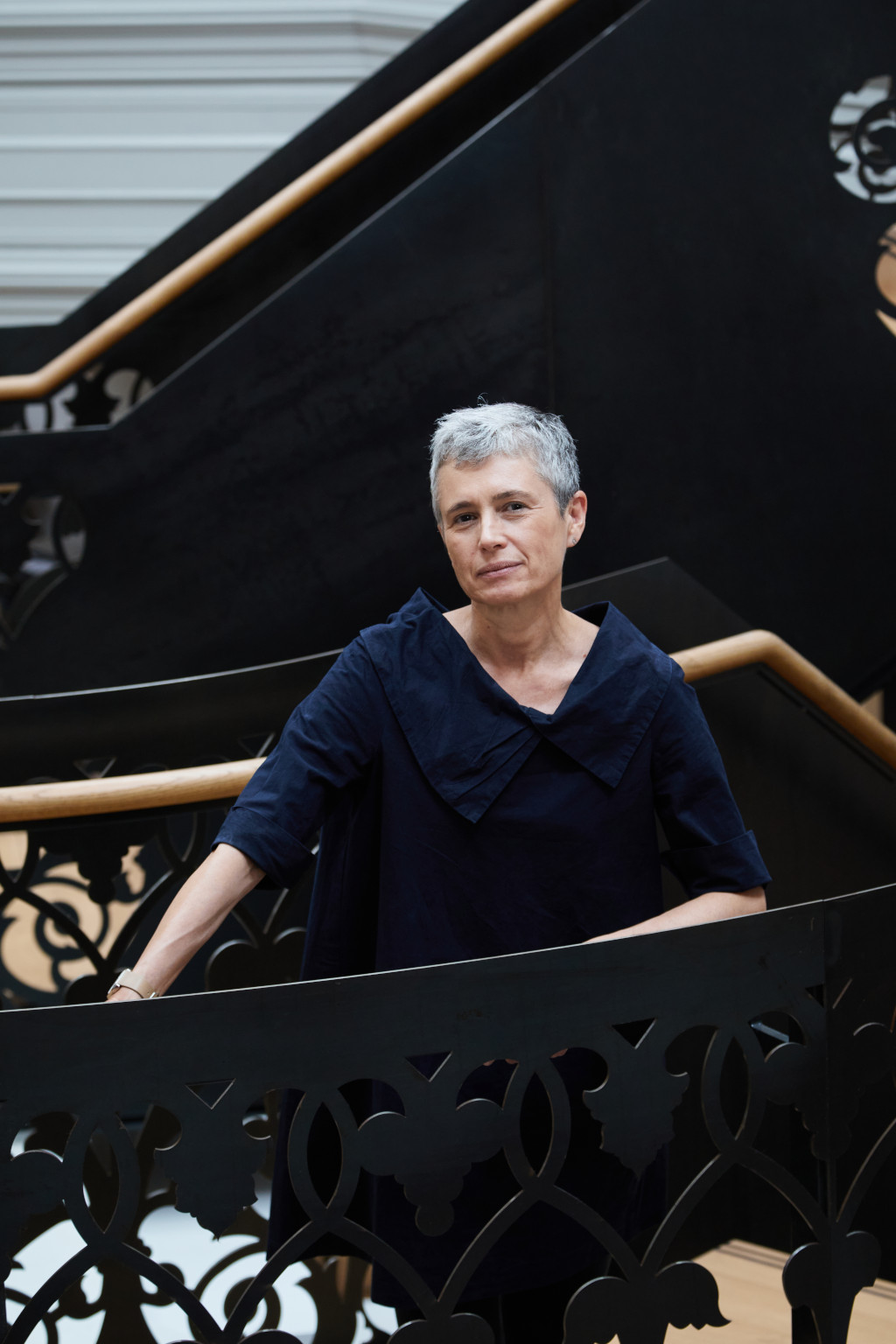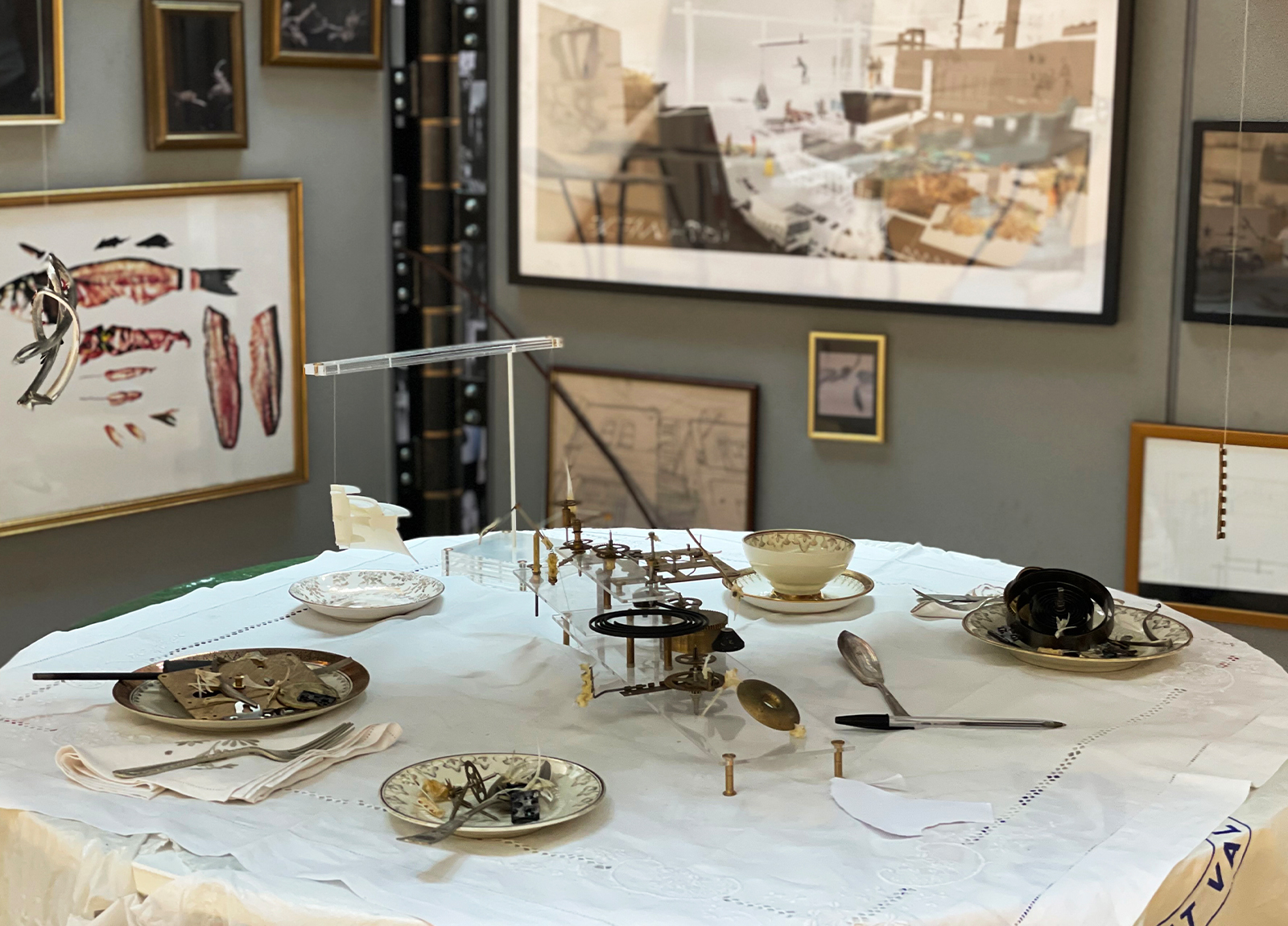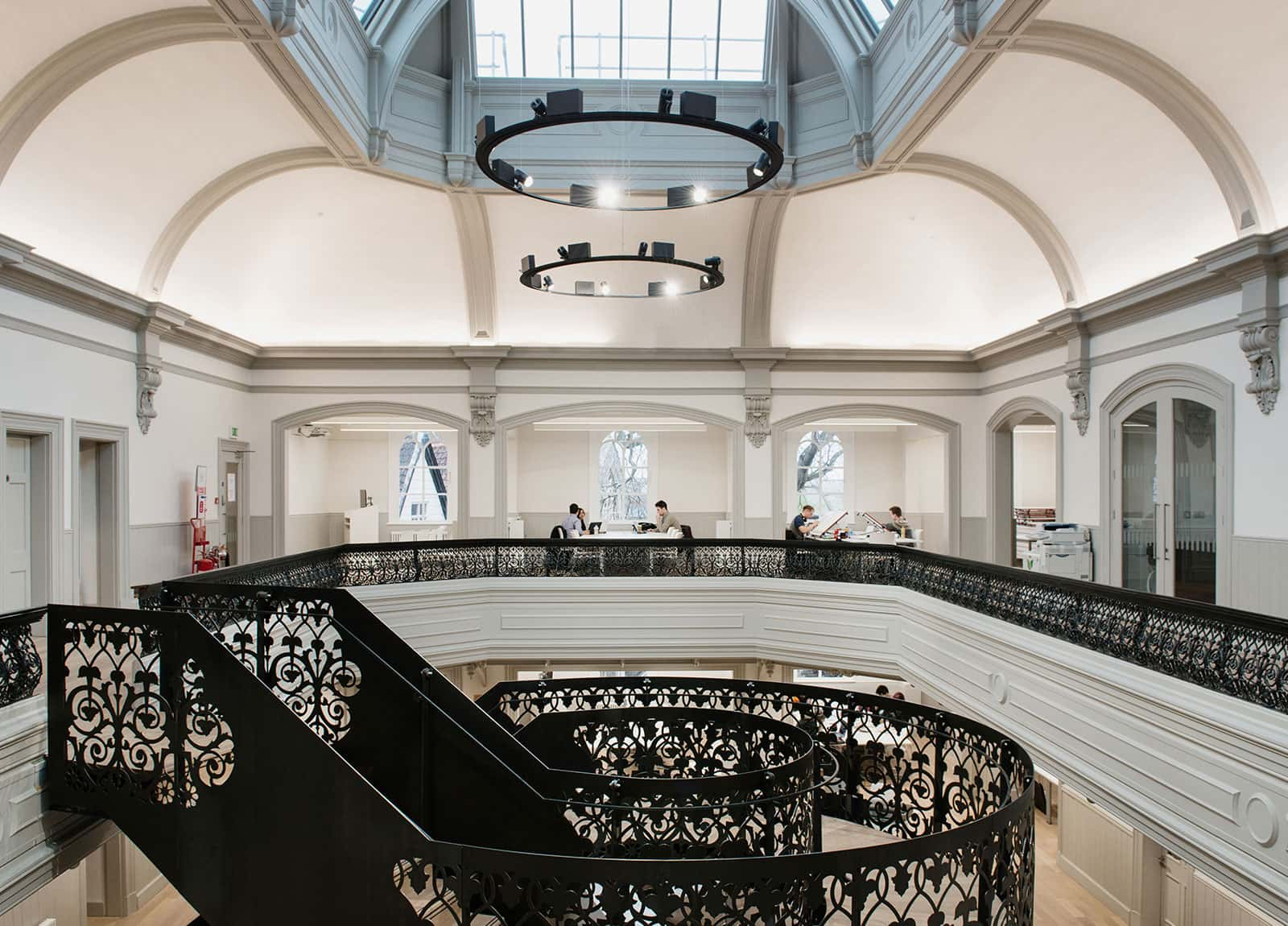Professor Teresa Stoppani
Director of Architecture and Interior Design
Architecture and Interior Design
Professor Teresa Stoppani is the Director of Architecture and Interior Design at Norwich University of the Arts. An Architetto (Italy) and architectural theorist, she lectures in history and theory, and teaches design studio across the disciplines.

Teresa studied Architecture at the IUAV University of Venice and received a PhD in Architecture and Urban Design from the University of Florence. An Italian architect and architectural theorist, she has taught at the IUAV, the University of Greenwich and the Architectural Association in London, UT Sydney, and Leeds Beckett University where she was the Head of the School of Architecture.
My research focuses on the relationship between architecture theory and the design process, and on the influence of other spatial and critical practices and of philosophy on the specifically architectural.
Stemming from a study of urban paradigms that challenge both the classical and the modern city – Paradigm Islands: Manhattan and Venice (Routledge 2010), my recent work has proposed ‘unorthodox’ interpretations of key concepts and words in architecture and urbanism – Unorthodox Ways to Think the City (Routledge, 2019).
My ongoing project ‘Architecture_Dust’ explores the undoing of form in architecture, studying its materiality (‘Dust’, ‘Atomised’) and minor and aberrant practices (‘lnvisibles’, ‘Monsters’), as well as its responses to violence and disaster (‘Violent Acts of Architecture’, ‘Architecture of Disaster’, ‘Architecture and Trauma’).
On the background of it all are earlier studies of the tensions at play in architecture – between design and theory (essays on G.B. Piranesi’s etchings and an architecture of becoming), between history and the project (on Manfredo Tafuri and Aldo Rossi), between the project and representation (on mapping as a political project), between thinking and making in architecture (with the ThisThingCalledTheory collective) and its intrinsic relation with society and politics (‘Relational Architecture’, ‘StateS of Exception’).
I am a member of the Architectural Humanities Research Association Steering Group and executive editor of the AHRA journal Architecture and Culture. I am the instigator of the international architecture research collective ThisThingCalledTheory, for which I co-edited the book This Thing Called Theory (Routledge 2016).
Books
- Teresa Stoppani and George Themistokleous (eds). Body Matters, Abingdon, Oxford and New York: Routledge, 2026 [forthcoming].
- Teresa Stoppani. Unorthodox Ways to Think the City. Representations, constructions, dynamics. Abingdon, Oxford and New York: Routledge, 2018 and 2020.
- Teresa Stoppani, Giorgio Ponzo and George Themistokleous (eds). This Thing Called Theory, Abingdon, Oxford and New York: Routledge, 2016.
- Teresa Stoppani. Paradigm Islands: Manhattan and Venice. Discourses on Architecture and the City. Abingdon, Oxford: Routledge, 2010 and 2015.
Edited journals
- Teresa Stoppani and George Themistokleous (eds). ‘Body Matters’. Architecture and Culture special issue (2027). [forthcoming].
- Teresa Stoppani and Andrea Brighenti (eds). ‘Stratifications, Folds, De-stratifications’. lo Squaderno 37 (2015).
- Teresa Stoppani (ed.). ‘Antipodes / Measuring the World’. Haecceity Papers 2:1 (2006).
Journal articles
- Teresa Stoppani, ‘Postcard from Nowhere (Counterswimming)’. Drawing Matter, 8 April 2020.
- Teresa Stoppani and Doreen Bernath, ‘Pantheon, 2010. What are we looking at?’. The Journal of Architecture, 24:8 (2020), 1164-1166.
- Teresa Stoppani, ‘Post-scriptum: “pero eso no es suficiente”’. A. Revista Arquitectura PUCP, 11:13, June 2019, 89-93.
- Teresa Stoppani, ‘Relational Architecture: Dense Voids and Violent Laughters’. field: 6:1 (2015), ‘Urban Blind Spots’, Kossak, T. Schneider, S. Walker (eds), 97-111.
- Teresa Stoppani, ‘The Fasnacht Fold’. lo Squaderno 37 (September 2015), 21-25.
- Teresa Stoppani, ‘Material Lines: Apocalypse, Capricci, War and Other Disasters’. The Journal of Architecture 19:4 (2014), 511-535.
- Teresa Stoppani, ‘Budowanie napięcia – dziedzictwo Manfreda Tafuriego. Między praktykami krytycznymi a praktykami materialnymi w architekturze’. Recykling Idei. Media, Spolecznie, Zaangazowane 16:2014-14 (Feb 2014) ‘Cena Architektury’, 88-96. (‘The Building of Tension – Manfredo Tafuri’s legacy: from operative criticism to historical project, between critical practices and material practices in architecture’).
- Teresa Stoppani, ‘The Architecture of the Disaster’. Space & Culture 15:2 (May 2012) ‘Spaces of Terror and Risk’, David Wills, Cerwyn Moore, Joel McKim (eds), 138-153.
- Teresa Stoppani, ‘Dust, vacuum cleaners, (war) machines and the disappearance of the interior’. IDEA Journal 2011 (journal of the Interior Architecture Educators Association) ‘Interior Economies, Interior Design’, (2012) 50-59.
- Teresa Stoppani, ‘The Architecture of Explosive Slowness’. lo Squaderno (explorations in space and society) 26 (Dec 2012) ‘Space – Time – Speed’, 9-14.
- Teresa Stoppani, ‘Altered States of Preservation: Preservation by OMA/AMO’. Future Anterior (journal of historic preservation, history, theory and criticism) GSAPP, Columbia University, VIII/1 (Summer 2011), 96-109.
- Teresa Stoppani, ‘Eyes that see: urban trompe-l’oeil as a critical act’. Ultima Thule (journal of architectural imagination) 1 (Dec 2011).
- Teresa Stoppani, ‘After the First Miracle: Greenaway on “Veronese”’. Log 18 (2010), 59-64.
- Teresa Stoppani, ‘Grid Effects’. ARQ Architecture Research Quarterly 12:3-4 (2009), 255-262.
- Teresa Stoppani, ‘Venetian Dusts’. Log 17 (2009), 31-40.
- Teresa Stoppani, ‘The Vague, the Viral, the Parasitic: Piranesi’s Metropolis’. Footprint 5 (2009) ‘Metropolitan Form’, 147-160.
- Teresa Stoppani, ‘Venetian Time and The Meander’. Log 12 (2008), 131-143.
- Teresa Stoppani, ‘Interpreting the Renaissance by Manfredo Tafuri’, The Journal of Architecture, 13:3 (2008), 345-354.
- Teresa Stoppani, ‘Dust makings. On Walter Benjamin’s Passagen-Werk and some contemporary dusty makings in architecture’. The Journal of Architecture 12:5 (2007), 543-557.
- Teresa Stoppani, ‘Dust revolutions. Dust, informe, architecture (notes for a reading of Dust in Bataille)’. The Journal of Architecture 12:4 (2007), 437-447.
- Teresa Stoppani, ‘Antípodas. Proyectos para una nueva cartografía’. 47 al fondo 11:15 (2007), 26-31. [in Spanish and English]
- Teresa Stoppani, ‘Voyaging in Piranesi’s Space. A contemporary re-reading of the beginnings of modernity’. Haecceity Papers 1:2 (2006) ‘What Now Architecture?’, 32-54.
- Teresa Stoppani, ‘Dusty Stories of Woman. Notes for a Re-definition of Dust’. The Issues in Contemporary Culture and Aesthetics 1 (2005), 125-132.
- Teresa Stoppani, ‘Mapping. The Locus of the Project’. Angelaki 9:2 (2004) ‘The Politics of Place’, 181-196.
- Teresa Stoppani, ‘Delirium and Historical Project’. Thesis 49:4 (2003) ‘Medium Architektur’, 22-29.
- Teresa Stoppani, ‘Translations: The Map as Project. An Experiment in Venice’. 47 al fondo 7:10 (2003), 30-35. [in Spanish and English]
- Teresa Stoppani, ‘Scenic Chorality and Urban Space: Radio City Music Hall and the “Daula Law”’. Urban Design Studies 7 (2001), 75-88.
Book chapters
- ‘Teresa Stoppani’ interviewed by Lina Malfona. In Lina Malfona, Lucia Giorgetti, Cecilia Marcheschi, Elisa Barsanti (eds), Futuro o eclissi della critica, Pisa: Pisa University Press 2025 (Italian). The Future or the Eclipse of Criticism, Barcelona: Actar, 2025 (English). [forthcoming]
- Teresa Stoppani. ‘‘Earthworm’.Worm’. In Kostas Tsiambaos (ed.), The Architect and the Animal. Cambridge MA: MIT Press, 2025 [forthcoming].
- Teresa Stoppani. ‘Architecture After Utopia: The Times of the Historical “Project”’. In Mateja Kurir (ed). On Power in Architecture. Abingdon, Oxford and New York: Routledge, 2024.
- Teresa Stoppani. ‘The in-exact words of architecture’. In Pari Riahi, Laure Katsaros, Michael Davis (eds). Exactitude. Amherst MA: UMass Press, 2022.
- Teresa Stoppani. ‘Opinions – or, from dialogue to conversation’. In Penny Lewis, Lorens Holm and Sandra Costa Santos (eds), Architecture and Collective Life. Abingdon, Oxford and New York: Routledge, 2022.
- Teresa Stoppani. ‘Arhitektura po utopiji: časi zgodovinskega “projekta”’ [Architecture after utopia: the times of the historical “project”]. In Mateja Kurir (ed.), O oblasti v arhitekturi [On power in architecture]. Ljubljana: Maska / Društvo Igor Zabel za kulturo in teorijo (association for culture and theory, 2021. [in Slovene]
- Teresa Stoppani ‘Not a schema: notes on the anxiety of mapping’. In V. Cavedagna and A. Dutto (eds), Schema. Towards a philosophical-architectural dictionary. Turin: Philosophy Kitchen, 2019.
- Teresa Stoppani. ‘Post-scriptum. “But that is not enough”’. In T. Stoppani, G. Ponzo and G. Themistokleous (eds), This Thing Called Theory. Abingdon, Oxford and New York: Routledge, 2016, 298-304.
- Teresa Stoppani. ‘Arhitektura po utopiji: časi zgodovinskega “projekta”’. In Mateja Kurir (ed.), O oblasti v arhitekturi. Ljubljana: Maska / Društvo Igor Zabel za kulturo in teorijo, 2021.
- Teresa Stoppani ‘Not a schema: notes on the anxiety of mapping’. In V. Cavedagna and A. Dutto (eds), Schema. Towards a philosophical-architectural dictionary. Turin: Philosophy Kitchen, 2019.
- Teresa Stoppani. ‘Post-scriptum. “But that is not enough”’. In T. Stoppani, G. Ponzo and G. Themistokleous (eds), This Thing Called Theory. Abingdon, Oxford and New York: Routledge, 2016, 298-304.
- Teresa Stoppani ‘Architecture and trauma’. In Y. Ataria, D. Gurevitz, H. Pedaya, Y. Neria (eds), Interdisciplinary Handbook of Trauma and Culture. Cham Zurich: Springer International Publishing, 2016, 133-149.
- Teresa Stoppani. ‘Stilling time’. In Heide Fasnacht, Suspect Terrain (exhibition catalogue). New York: Socrates Publishing, 2015, 18-28.
- Teresa Stoppani. ‘Antigone’s dissident dustings: coatings, revolutions and the circularity of dust’. In Ines Weizman (ed), Architecture and the Paradox of Dissidence. Oxon UK and New York: Routledge, 2013, 117-127.
- Teresa Stoppani ‘Material and critical: Piranesi’s erasures’. In Ivana Wingham (ed), Mobility of the Line. Art, Architecture, Design. Basel: Birkhäuser, 2013. 234-246.
- Teresa Stoppani ‘You are here: localizzazioni e smarrimenti cartografici’. In Luigi Coccia (ed.), Architettura e Turismo. Milano: Franco Angeli, 2012, 55-61. [in Italian]
- Teresa Stoppani. ‘Depiction: architecture is a concept’. In Wouter Davidts, Guy Châtel and Stefaan Vervoort (eds), Luc Deleu – T.O.P. office: Orban Space. Amsterdam: Valiz, 2012, 265-276.
- Teresa Stoppani. ‘A conversation of many’. In David Chipperfield, Kieran Long and Shumi Bose (eds), Common Ground: a critical reader. Venice: La Biennale di Venezia / Marsilio, 2012, 83-95.
- Teresa Stoppani. ‘L’histoire assassinée. Manfredo Tafuri and the present’. In S. Bandyopadhyay, J. Lomholt, N. Temple and R. Tobe (eds), The Humanities in Architectural Design: A Contemporary and Historical Perspective. London: Routledge, 2010, 214-225.
- Teresa Stoppani. ‘Translucent and fluid: Piranesi’s impossible plan’. In M. Frascari, J. Hale and B. Starkey (eds), From Models to Drawings: Imagination and Representation in Architecture. London: Routledge, 2007, 99-108.
- Teresa Stoppani. ‘Representing Venice. One, multiple, impossible’. In S. Loo and K. Bartsch (eds), Panorama to Paradise: Scopic Regimes in Architectural and Urban History and Theory. Proceedings of the 24th International Conference of the Society of Architectural Historians of Australia and New Zealand. Adelaide: SAHANZ, 2007.
- Teresa Stoppani. ‘The building of tension. Manfredo Tafuri’s legacy: from operative criticism to historical project, between critical practices and material practices in architecture’. In H. van Koten (ed.), Reflections on Creativity. Dundee: Duncan of Jordanstone College, 2007.
- Teresa Stoppani. ‘Unfinished business. The historical project after Manfredo Tafuri’. In J. Rendell, J. Hill, M. Dorrian and M. Fraser (eds), Critical Architecture. London: Routledge, 2007, 22-30.
- Teresa Stoppani. ‘The reversible city: exhibition(ism), chorality and tenderness in Manhattan and Venice’. In Christoph Lindner (ed.), Urban Space and Cityscapes. London: Routledge, 2006, 155-176.
- Teresa Stoppani. ‘Seven thoughts on a sin (Typology)’. In Negation in Art and Architecture (exhibition catalogue). Amsterdam: 66 East Centre for Urban Culture, 2005, 12-13.
- Teresa Stoppani. ‘The undoing of the museum. The manual, the architect and the millionaire’ (with projects by Lieven De Boeck). In Wouter Davidts (ed.), MIM ¿Museum in Motion? Sittard: Museum Het Domein; Maastricht: Jan van Eyck Academie; Ghent: A&S/books, 2005, 127-140.
Other academic activities
- 2024 Australasian Society for Continental Philosophy annual conference. Deakin 2-4 December 2024. Invited speaker in the plenary panel on Andrew Benjamin. Talk: ‘The Philosopher in the Design Studio’.
- 2024 ‘Borders as Both Site and Method’ conference. University of Melbourne, 18-19 July 2024. Keynote speaker. Talk: ‘Lisontium: Sconfinamenti (Transbordering)’.
- 2023 Contamination, Dirt and Otherwise Out of Place, Creative Enquiry Forum 2023, University of Sheffield, 24 November 2023. Invited speaker. Paper: ‘10 Amnesiac Fragments’.
- 2024-present Member of The International Committee of Architectural Critics (CICA)
- 2021-present Architectural Association School of Architecture, London. History and Theory Studies lecturer and PhD supervisor.
- 2021-2024 University of York. York Graduate Research School, Department of History of Art. PhD supervisor.
- 2017-2022 Leeds Beckett University. Leeds School of Architecture. PhD external advisor.
- 1998-present Architectural Association (AA) London. Member.
- 2017-present Architectural Humanities Research Association (AHRA). Research Group member.
- 2015-2017 Leeds 2023. City of Leeds, United Kingdom. Leeds European Capital of Culture bid. Member of the European Advisory Group.
- 2011-present European Architectural History Network (EAHN). Member.
- 2009-present Architectural Humanities Research Association (AHRA). Steering Group member.
- 2000-2004 Institute of Architects of the Province of Gorizia (Italy). Registered since 1996; enrolled since 2000; active membership 2000-04.
Related Courses
- Showing 1-2 of 3 results
-
Visit the Architecture BA (Hons) course page

- Filter courses by study level: Undergraduate
- Filter courses by duration: Full time
- Filter courses by entry options: September 2026
- Filter courses by subject: Architecture
Architecture BA (Hons)
Push the boundaries of how we think about people, culture and the environment to create innovative and responsible design.
-
Visit the Architecture MArch course page

- Filter courses by study level: Postgraduate
- Filter courses by duration: Full time
- Filter courses by duration: Part time
- Filter courses by entry options: September 2026
- Filter courses by subject: Architecture
Architecture MArch
Take the next step towards becoming a qualified architect on our MArch Architecture course.